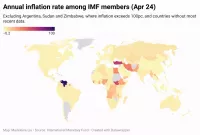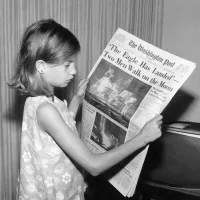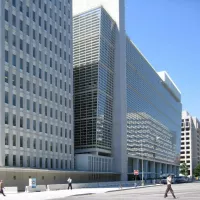Estonia, officially the Republic of Estonia, is a Northern European country bordered by the Gulf of Finland (opposite Finland), the Baltic Sea (opposite Sweden), Latvia, and Russia. It comprises the mainland, Saaremaa and Hiiumaa islands, and over 2,300 other islands. Tallinn is the capital. Estonian is the official language for its population of nearly 1.4 million. Estonia is among the least populous EU and NATO members.
1905: Young Estonia literary movement
Around 1905, a neo-romantic literary movement Young Estonia (Noor-Eesti) led by poet Gustav Suits and including writers Friedebert Tuglas, Villem Grünthal-Ridala, and Johannes Aavik amongst others, had an aesthetic programme that followed the trends of Finnish, French, German, Scandinavian and Italian literature of the time, comprising elements of Impressionism, Symbolism and Expressionism.
1905: 1905 Revolution
During the 1905 Revolution, the first legal Estonian political parties were founded, and an Estonian national congress demanded unification and an end to Russification. The Tsarist government responded to the unrest with a brutal crackdown.
1906: Professionalisation of Estonian theatre
In 1906, the Vanemuine in Tartu and the Estonia Theatre in Tallinn formally became professional institutions.
1908: Estonia Theatre pioneers opera and operetta
From 1908 onwards, Estonia Theatre became known for its pioneering work in opera and operetta.
1908: First cinematographic film production in Estonia
In 1908 the history of cinematographic film production in Estonia started with a newsreel documenting a visit to Tallinn by then King Gustav V of Sweden.
1913: Early Narrative film created
In 1913, early narrative filmmaking soon followed, with early works such as Laenatud naene by Johannes Pääsuke.
1914: Early Narrative film created
In 1914, early narrative filmmaking soon followed, with early works such as Karujaht Pärnumaal by Johannes Pääsuke.
November 1917: Bolsheviks seize power
In November 1917, Bolsheviks seized power in Estonia and disbanded the Provincial Assembly. The Provincial Assembly then established the Salvation Committee.
February 1918: Declaration of Independence
In February 1918, the Salvation Committee declared the independence of Estonia, forming the Estonian Provisional Government during the interlude between Russian retreat and German arrival.
1918: Independent Estonia seeks new architectural identity
After 1918, the newly independent Estonia sought to express its identity through new buildings.
1918: Integration of European avant-garde influences
During the 1918–1940 period of independent Estonia, artists increasingly integrated contemporary European avant-garde influences.
1918: Estonian Declaration of Independence
In 1918, the Estonian Declaration of Independence marked a significant moment, culminating the Estonian national awakening from the mid-19th century.
January 1919: Estonian counter-offensive
In January 1919, the Estonian Army, led by Johan Laidoner, launched a counter-offensive, ejecting Bolshevik forces from Estonia within a few months.
April 1919: Estonian Constituent Assembly Elected
In April 1919, the Estonian Constituent Assembly was elected. They passed a sweeping land reform and adopted a highly liberal constitution, establishing Estonia as a parliamentary democracy.
June 1919: Estonia Defeats German Landeswehr
In June 1919, Estonia defeated the German Landeswehr which had attempted to dominate Latvia.
1919: Courses offered in Estonian at the University of Tartu
In 1919, courses were offered in Estonian for the first time at the University of Tartu.
1919: Founding of the Pallas Art School
The founding of the Pallas Art School (1919–1940) in Tartu marked a turning point, giving rise to a generation of artists.
February 1920: Tartu Peace Treaty Signed
On February 2, 1920, the Tartu Peace Treaty was signed between Estonia and Soviet Russia, with the latter giving up all sovereign claims to Estonia.
1920: Estonian Victory in the War of Independence
Võidupüha is celebrated on 23 June in remembrance of the Estonian victory in the 1918–1920 War of Independence.
1921: Joined League of Nations
In 1921, Estonia became a member of the League of Nations.
1922: Completion of the Estonian parliament building
The Estonian parliament building at Toompea, designed by architects Eugen Habermann and Herbert Johanson, was completed in 1922.
1925: Cultural-autonomy law
In 1925, Estonia adopted the cultural-autonomy law for ethnic minorities, which was one of the most liberal of its time.
1925: Estonian Cultural Autonomy law passed
The Estonian Cultural Autonomy law that was passed in 1925 was unique in Europe at that time.
1932: Non-aggression pact with the Soviet Union
In 1932, Estonia signed non-aggression pacts with the Soviet Union to ensure peace.
1933: Constitutional reform
In 1933, the right-wing Vaps movement spearheaded a constitutional reform establishing a strong presidency in Estonia.
March 1934: Konstantin Päts extends state of emergency
On March 12, 1934, Konstantin Päts, the acting head of state, extended a state of emergency over the entire country, under the pretext that the Vaps movement had been planning a coup.
1936: Best Summer Olympics Ranking
Estonia's best Summer Olympics ranking was 14th at the 1936 Summer Olympics.
1937: Referendum adopts new constitution
In 1937, a referendum adopted a new constitution in Estonia, modifying the government structure.
1938: Election of new bicameral parliament
In 1938, an election including opposition candidates provided a new bicameral parliament in Estonia.
August 1939: Nazi-Soviet Pact
In August 1939, the Nazi-Soviet Pact secretly assigned Estonia to the Soviet Union's sphere of influence.
September 1939: "Mutual assistance treaty"
In September 1939, Joseph Stalin pressured the Estonian government into signing a "mutual assistance treaty", allowing the USSR to establish military bases in Estonia during the Soviet invasion of Poland.
1939: Estonia Declares Neutrality
In 1939, Estonia declared neutrality at the start of World War II, but this proved futile.
1939: Departure of the German-speaking population
In 1939, the German-speaking population mostly left Estonia.
June 1940: Soviet Union Institutes Blockade and Demands Passage
In June 1940, the Soviet Union instituted a full naval and air blockade on Estonia, and demanded free passage of the Red Army and the establishment of a pro-Soviet government.
August 1940: Estonia Annexed by Soviet Union
In August 1940, Estonia was formally annexed by the Soviet Union as the Estonian SSR.
1940: Lowest recorded temperature
In 1940, Estonia recorded its lowest temperature at −43.5 °C (−46.3 °F).
1940: End of Pallas Art School
The Pallas Art School in Tartu existed from 1919 to 1940.
June 1941: Estonians Deported to Russia
On June 14, 1941, approximately 11,000 Estonians were deported to Russia, where most would be killed, as part of the Soviet Union's repressive terror regime.
August 1941: Soviets Evacuate Tallinn
In late August 1941, the Soviets evacuated Tallinn by sea, suffering massive losses in the process. A puppet Estonian Self-Administration was established, and occupied Estonia was merged into Reichskommissariat Ostland.
1943: Forced Conscription Instituted
In 1943, German occupation authorities instituted forced conscription in Estonia, eventually leading to the formation of the Estonian Waffen-SS division.
1944: Red Army reached Estonian borders
In 1944, the Red Army reached the Estonian borders, but its advance was stopped for six months. In March, the Soviet Air Force bombed Tallinn and other Estonian towns. In September, the Germans abandoned mainland Estonia. As German forces retreated from Tallinn, Jüri Uluots appointed a government headed by Otto Tief in an unsuccessful attempt to restore Estonia's independence.
1944: Estonian writers flee Soviet rule
Many writers fled Estonia in 1944 from Soviet rule.
1944: Soviet influence on architecture begins
Under the 1944-1991 Soviet occupation, architecture in Estonia was heavily influenced by Soviet urban planning.
1944: Soviet army occupies Estonia
When the Soviet army occupied Estonia in 1944, many Estonian artists fled westwards and art was heavily regulated.
1945: Estonians Form 97% of the Population
In 1945, Estonians formed 97% of the population of Estonia.
March 1949: Estonians Deported to Siberia
In March 1949, about 20,000 Estonians were deported to Siberia as part of the Soviet's collectivization policy.
1966: First Estonian modernist art works get official permission
In 1966, the first Estonian modernist art works got the official permission from the Soviet authorities to be displayed in public exhibitions.
August 1987: Hirvepark meeting in Tallinn
On August 23, 1987, the Hirvepark meeting in Tallinn called for the public disclosure of the secret protocols of the Molotov–Ribbentrop Pact that had led to Estonia's occupation.
1987: Priit Pärn gains recognition for Breakfast on the Grass
Animator Priit Pärn, celebrated for his surreal and satirical style, gained international recognition in 1987 with Breakfast on the Grass, a profound critique of totalitarian society.
November 1988: Sovereignty Declaration
On November 16, 1988, the parliament of Soviet-controlled Estonia asserted the primacy of Estonian laws with the Sovereignty Declaration.
1988: Singing Revolution
In 1988, The Singing Revolution began as a non-violent movement against Soviet rule, paving the way for Estonia's restored independence.
August 1989: Baltic Way
On August 23, 1989, two million people formed the Baltic Way, a human chain spanning Estonia, Latvia, and Lithuania, to demonstrate unity in pursuit of independence.
1989: Estonians decreased to 62% of population
By 1989, Estonians share of the population had fallen to 62% due to Soviet Russification policies.
1990: Exiled writers publish significant works by 1990
Between 1944 and 1990, exiled Estonian writers published 267 novels, 181 poetry collections, and 155 memoirs, reflecting their determination to preserve national identity.
1990: First Private Radio Station Launched
In 1990, Estonia launched its first private radio station.
1990: Baltic News Service (BNS) Established
In 1990, the Baltic News Service (BNS), a private news agency covering the Baltic states, was established.
1990: Congress of Estonia Formed
In 1990, the Congress of Estonia was formed as the representative body of Estonian citizens.
March 1991: Referendum for Independence
In March 1991, a referendum was held where 78.4% of voters supported independence in Estonia.
August 1991: Restoration of full independence
In August 1991, following the Singing Revolution from 1988 to 1990, Estonia restored its full independence after years of Soviet occupation.
1991: Joined United Nations
In 1991, Estonia joined the United Nations.
1991: End of Soviet occupation
In 1991, the Soviet occupation of Estonia ended, leading to strained relations with Russia.
1991: Restoration of independence
Major demographic changes took place in Estonia after the country restored independence in 1991.
1992: Radical economic reforms launched
In 1992 radical economic reforms were launched for switching over to a market economy, including privatisation and currency reform.
1992: Adoption of the current constitution
In 1992, Estonia adopted its current constitution through a referendum.
1992: Private TV Licences Issued
In 1992, Estonia issued its first private TV licences.
1992: Highest recorded temperature
In 1992, Estonia recorded its highest temperature at 35.6 °C (96.1 °F).
1993: Õnne 13 Debut
In 1993, Õnne 13, Estonia's longest-running television series, debuted.
1993: Law on Cultural Autonomy for National Minorities reinstated
The Law on Cultural Autonomy for National Minorities was reinstated in Estonia in 1993.
1994: Flat tax adoption
In 1994, Estonia became one of the first countries to adopt a flat tax, initially at a uniform rate of 26%.
1994: Last Units of Russian Army Left Estonia
In 1994, the last units of the Russian army left Estonia, marking the end of foreign military presence.
1995: International security and peacekeeping missions
Since 1995, Estonia has participated in numerous international security and peacekeeping missions, including Afghanistan, Iraq, Lebanon, Kosovo, and Mali.
2000: Population Estimate
Around 2000 BC, archaeological estimates place the population within Estonian territory at approximately 10,000 inhabitants.
2000: Share of Estonians in the population
In the 2000 census, the share of Estonians in the population was 68.3%.
2001: Estonia wins Eurovision Song Contest
In 2001, Estonia won the Eurovision Song Contest with "Everybody" performed by Tanel Padar and Dave Benton.
2003: Estonian European Union membership referendum
In 2003, Estonia held a referendum regarding its membership in the European Union.
2004: Estonia Joins EU and NATO
In 2004, Estonia joined both the European Union and NATO, aligning itself with Western institutions.
2004: Categorization of populated areas
In 2004, the Estonian government established regulations for categorizing populated areas as küla (village), alevik (small town or small borough), alev (town), and linn (city).
2004: Ingrian Finnish minority cultural council
In 2004, the Ingrian Finnish minority in Estonia elected a cultural council and was granted cultural autonomy.
2005: Nationwide binding Internet voting
In 2005, Estonia became the first country to enable nationwide binding Internet voting during local elections.
2005: Flat tax rate reduction
In 2005, Estonia reduced its flat tax rate to 24%.
2006: Best Winter Olympics Ranking
Estonia's best Winter Olympics ranking was 12th at the 2006 Winter Olympics.
2006: Flat tax rate reduction
In 2006, Estonia further reduced its flat tax rate to 23%.
2007: Eesti Rahvusringhääling Established
In 2007, Eesti Rahvusringhääling was established, consolidating radio and television services previously provided by Eesti Raadio and Eesti Televisioon under the Estonian National Broadcasting Act.
2007: Joined the Schengen Area
In 2007, Estonia joined the Schengen Area.
2007: Cooperation treaty with the European Space Agency
In 2007, Estonia signed a cooperation treaty with the European Space Agency.
2007: Adoption of Estonian Sign Language
In 2007, Estonian Sign Language was officially adopted under the Estonian Language Act as the primary sign language of Estonia, used by an estimated 4,500 people.
2007: Estonian Swedes cultural autonomy
In 2007, the Estonian Swedes minority received cultural autonomy.
2007: Construction industry employment
In 2007, the construction industry in Estonia employed over 80,000 people, roughly 12% of the total workforce.
2008: Number of Swedish residents
By 2008, the number of Swedish residents in Estonia had risen again, numbering almost 500 people.
2008: Flat tax rate reduction
In 2008, Estonia reduced its flat tax rate to 21%.
2008: NATO Cooperative Cyber Defence Centre of Excellence established
In 2008, the NATO Cooperative Cyber Defence Centre of Excellence was established in Tallinn.
2008: United Nations Human Rights Council report
The 2008 United Nations Human Rights Council report called the description of the citizenship policy of Estonia as "discriminatory" "extremely credible".
2008: Financial crisis
The 2008 financial crisis impacted Estonia with an initial contraction of GDP, leading to governmental budget adjustments.
2009: Gini coefficient
In 2009, Estonia's Gini coefficient held steadily higher than the EU average (31).
2009: Wind energy consumption
In 2009, wind energy comprised only 6% of Estonia's energy consumption but has been rapidly growing in recent years.
2009: Increase in logging across private and protected lands
Since at least 2009, logging has increased significantly across both private and protected lands, including national parks in Estonia.
July 2010: Citizenship statistics
As of 2 July 2010, 84.1% of Estonian residents were citizens of Estonia, 8.6% were citizens of other countries and 7.3% were "citizens with undetermined citizenship".
2010: Economic recovery
By 2010, Estonia's economy began to recover, driven by exports, and annual industrial output increased by over 20%.
2010: Russian speakers learning Estonian
By 2010, nearly two-thirds of the native Russian-speakers of Estonia had learnt to speak Estonian proficiently.
2010: Arvo Pärt becomes world's most performed living composer
In 2010, Estonian composer Arvo Pärt became the world's most performed living composer, a position he held until 2018.
January 2011: Adoption of the euro
On January 1, 2011, Estonia adopted the euro as its official currency.
2011: Christian Population in Estonia
In 2011, 97% of people who identify with a religion consider themselves Christian, in contrast to 93% in 2021.
2011: Joined the Eurozone
In 2011, Estonia joined the Eurozone.
2011: Real GDP growth
In 2011, Estonia's real GDP growth reached 8%.
2011: Invited to co-operate with Nordic Defence Cooperation
In 2011, the Baltic states, including Estonia, were invited to cooperate with Nordic Defence Cooperation in selected activities.
2011: Share of Estonians in the population
In the 2011 census, the share of Estonians in the population was 69.8%.
2011: Eastern Orthodoxy surpassing Lutheranism
Since the 2011 census, Eastern Orthodoxy has surpassed Lutheranism in terms of church membership in Estonia.
2012: Budget surplus
In 2012, Estonia was the only eurozone country with a budget surplus, with national debt at 6%.
2012: Oil shale contribution to GDP
In 2012, Estonia's oil shale industry contributed approximately 4% to the country's GDP.
2012: eu-LISA systems operational
In 2012, the eu-LISA systems became operational in Tallinn.
2013: Oil shale industry development
As of 2013, Estonia's oil shale industry was among the most developed globally, supplying approximately 70% of the country's total primary energy needs.
2013: Tangerines receives nominations
In 2013 Tangerines received nominations for both the Academy Awards and Golden Globes.
2013: Launch of ESTCube-1
In 2013, research satellite ESTCube-1 was successfully launched.
2013: Estonian electricity market liberalization
In 2013, the Estonian electricity market was liberalized, integrating into the Nord Pool Spot network.
2014: Launch of e-residency programme
In 2014, Estonia launched the e-residency programme, extending various digital services to non-residents.
2014: Smoke sauna tradition added to UNESCO list
In 2014, the smoke sauna tradition of Võru County, distinguished by its lack of a chimney and the use of smoke in the heating process, was included in the UNESCO list of intangible cultural heritage.
2014: Baltic Air Policing deployment
Since 2014, the Baltic Air Policing deployment has been based in Ämari Air Base, as part of NATO.
2015: Religious Unaffiliation in Estonia
A 2015 study by Pew Research found that the 45% of respondents who declared themselves to be religiously unaffiliated, were divided between 9% as atheists, 1% as agnostics, and 35% as believing in "nothing in particular".
2015: Estonia's R&D spending
As of 2015, Estonia spends around 1.5% of its GDP on Research and Development.
2015: Acceptance of quota refugees
Estonia accepted quota refugees under the migrant plan agreed upon by EU member states in 2015.
2015: Estonia officially joins European Space Agency
In 2015, Estonia officially joined the European Space Agency.
2015: Defence budget over 2% of GDP
Since 2015, Estonia's defence budget has been over 2% of GDP, fulfilling its NATO defence spending obligation.
2017: Administrative reform
In 2017, Estonia underwent administrative reform, resulting in a total of 79 local governments.
2017: Presidency of the Council of the European Union
In the second half of 2017, Estonia held the rotating Presidency of the Council of the European Union.
2017: Rail Baltica project
Since 2017, Estonia has been working on the Rail Baltica project to integrate with the European standard gauge railway system.
May 2018: Ease of Doing Business Index
As of May 2018, the Ease of Doing Business Index by the World Bank Group placed Estonia 16th in the world.
2018: Estonian students rank highly in PISA report
According to the 2018 PISA report, Estonian students placed 1st in Europe and globally ranked 5th in reading, 8th in mathematics, and 4th in sciences.
2018: Arvo Pärt no longer world's most performed living composer
From 2010 to 2018, Estonian composer Arvo Pärt was the world's most performed living composer.
2018: Estonia's exported goods amount
In 2018, Estonia's exported goods amounted to €10.4 billion, representing 72% of the country's total merchandise exports.
2019: Increase in Estonia's cultivated land
In 2019, Estonia recorded approximately 1.05 million hectares of arable land and 0.24 million hectares of natural grasslands.
2019: Significant job creation in manufacturing
In 2019, significant job creation occurred in Estonia, particularly in the production of electrical equipment and the repair and installation of machinery and equipment. The wood industry saw the highest growth in production volume during that year.
2020: Profit margin for manufacturing companies
In 2020, the total profit margin for manufacturing companies in Estonia was 4.9%.
2021: Foreign language skills in Estonia
According to 2021 census data, 76% of the population in Estonia can speak a foreign language, and 17% of the native speakers of standard Estonian reported that they can also speak a dialect of Estonian.
2021: Religious Affiliation in Estonia
According to data collected from the 2021 census, Approximately 29% of Estonia's population identified with a religion.
2021: Lutheran church membership
According to self-reported data of the 2021 census, 86,030 people (or 7.7% of the population) belong to the Lutheran church in Estonia.
2021: Share of Estonians in the population
In the 2021 census, the share of Estonians in the population was 69.4%.
2021: Previous census
The previous census to January 1, 2025 was conducted in Estonia in 2021.
January 2022: Startup statistics
As of January 2022, Estonia had 1,291 startups, including seven unicorn companies.
2022: Arrival of Ukrainian refugees
In 2022, Ukrainian refugees arrived in Estonia, now representing around 6% of the national population.
2022: Record profit for state forestry agency RMK
In 2022, the state forestry agency RMK reported a record profit of 1.4 billion euros.
2023: Number of Museums in Estonia
As of 2023, Estonia had 170 museums, whose collections collectively hold over 10 million artefacts.
2023: Prohibition of Russian pipeline gas imports
As of 2023, Estonia has prohibited the import of pipeline gas from Russia, following a decade of 100% reliance on Russian gas.
2023: GDP per capita
As of 2023, Estonia's GDP (PPP) per capita was $46,385, ranked 40th globally by the IMF.
2023: Number of educational institutions in Estonia
As of 2023, there were a total of 514 schools, a range of private and public educational institutions, in Estonia.
2023: Parliamentary elections
During the 2023 parliamentary elections, over half of the votes were cast online. Six parties secured seats in the Riigikogu, with Kaja Kallas of the Reform Party forming a coalition government.
2023: Press Freedom Index Ranking
In 2023, Estonia ranked 8th globally on the Press Freedom Index, according to Reporters Without Borders.
2023: Launch of ESTCube-2
In 2023, research satellite ESTCube-2 was successfully launched.
2023: Agreement giving preferential status to the Lutheran church ended
In 2023, the agreement giving preferential status to the Lutheran church in Estonia ended.
2024: Statistics of populated areas
As of 2024, Estonia has 47 cities, 13 towns, 186 small towns, and 4,457 villages, with Tallinn being the capital and largest city.
2024: First-place ranking in the Environmental Performance Index
Estonia achieved a first-place ranking in the Environmental Performance Index in 2024.
2024: Transition to Estonian-only instruction in public schools
In 2024, Estonia began transitioning all public schools to Estonian-only instruction, underscoring a renewed focus on the national language and culture.
2024: Press Freedom Index Ranking
In 2024, Estonia ranked 6th globally on the Press Freedom Index, according to Reporters Without Borders.
2024: Kristen Michal became the prime minister
In 2024, Kristen Michal became the prime minister of Estonia.
2024: Unemployment rate
In 2024, the registered unemployment rate in Estonia was 7.6%.
January 2025: Estonia's population count
On January 1, 2025, Estonia's population was 1,369,285 people, about 3% higher than in the previous census.
2025: Olympic Medals Per Capita
As of 2025, Estonia is the 12th most successful country in the world in terms of accumulated Olympic medals per capita.
Mentioned in this timeline
Ukraine is a large country in Eastern Europe second in...
The Union of Soviet Socialist Republics USSR existed from to...
Germany officially the Federal Republic of Germany is a Western...

Inflation in economics signifies an increase in the average price...

News encompasses information about current events disseminated through various media...

The World Bank is an international financial institution offering loans...
Trending
2 months ago Lazio vs Torino: Official Lineups, Sarri's Pedro Card, Baroni's Vlasic, Ilic Returns

7 days ago Kentucky Wildcats face criticism after significant loss to Gonzaga in college basketball game.
7 months ago Galatasaray vs Kayserispor: Match Details, Championship Hopes, and Okan Buruk's Strategy
James Milner is an English professional footballer known for his versatility playing as a midfielder for Brighton Hove Albion He...

4 months ago Selena Gomez: Bathrobe Pose, Rare Beauty Fragrance Launch, and Stunning Halter Dress

2 months ago Mariners secure ALCS spot after epic Game 5; Polanco in historic matchups.
Popular

Candace Owens is an American conservative political commentator and author...

Ilhan Omar is an American politician currently serving as the...

XXXTentacion born Jahseh Dwayne Ricardo Onfroy was a controversial yet...

Tom Cotton is an American politician and Army veteran currently...
The Kennedy Center Honors are annual awards recognizing individuals and...
Matt and Ross Duffer known as the Duffer Brothers are...